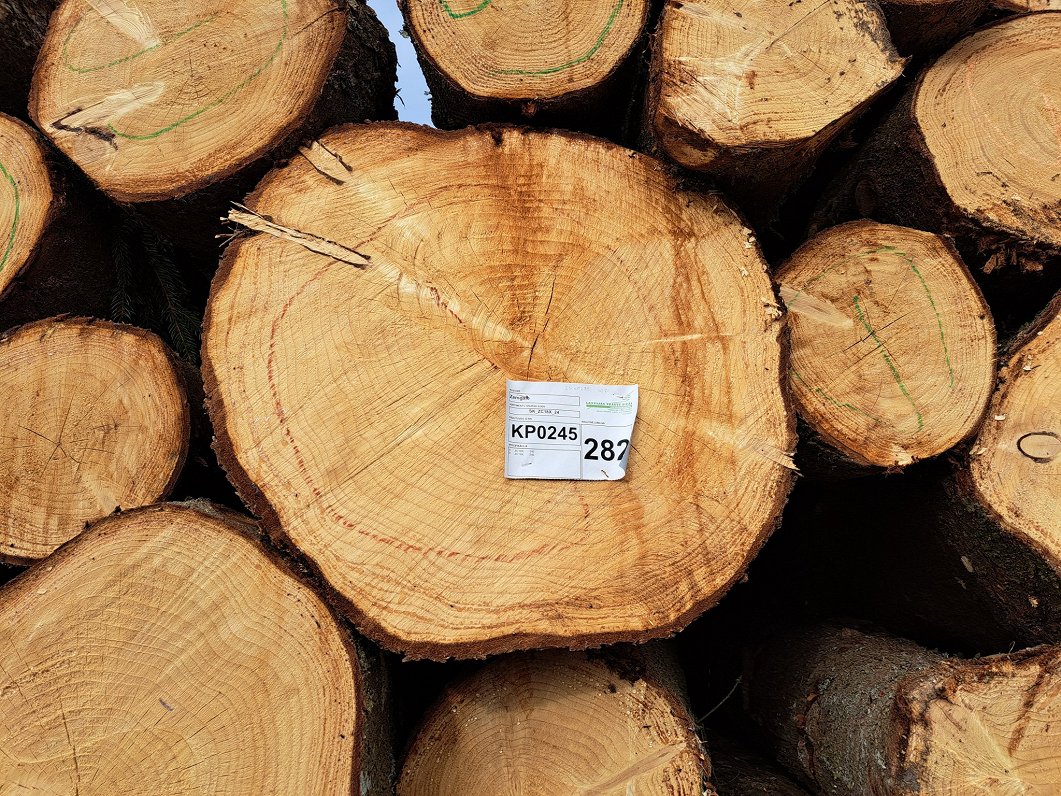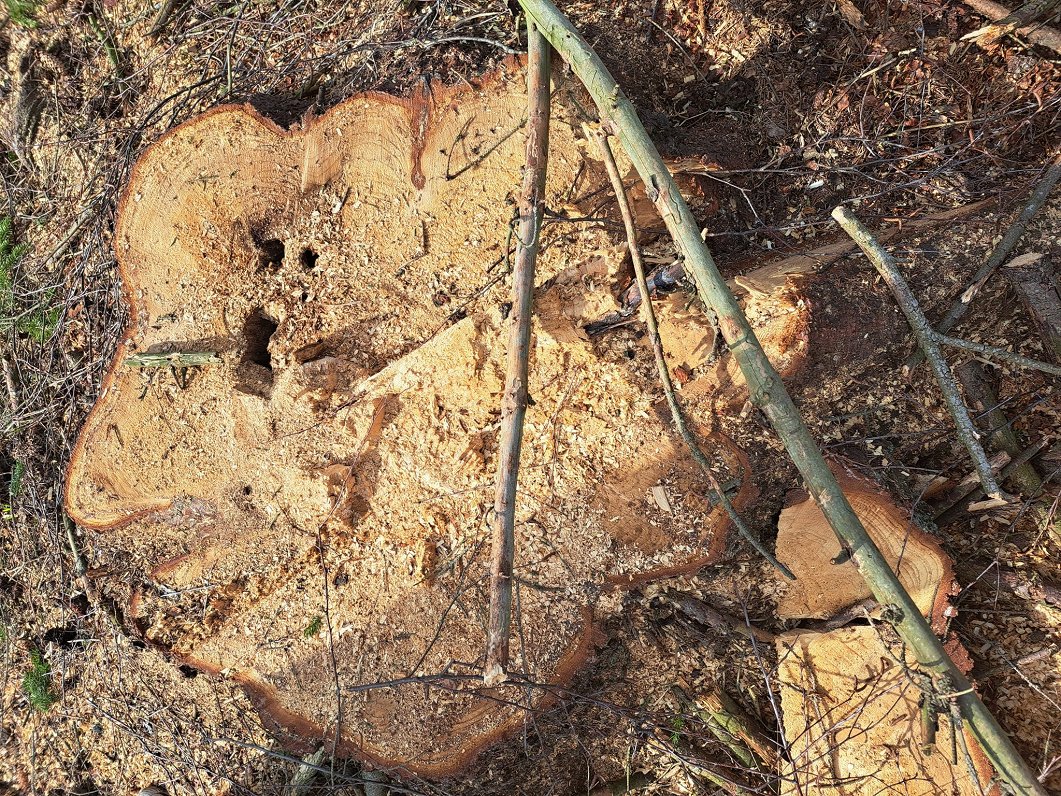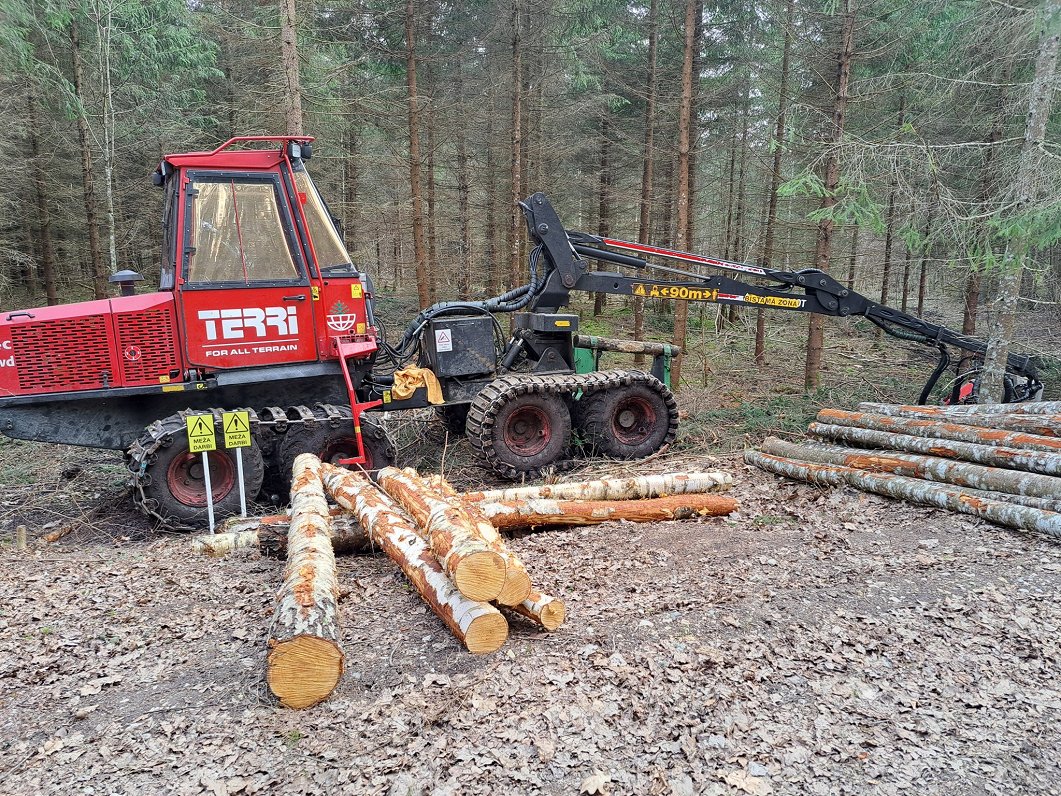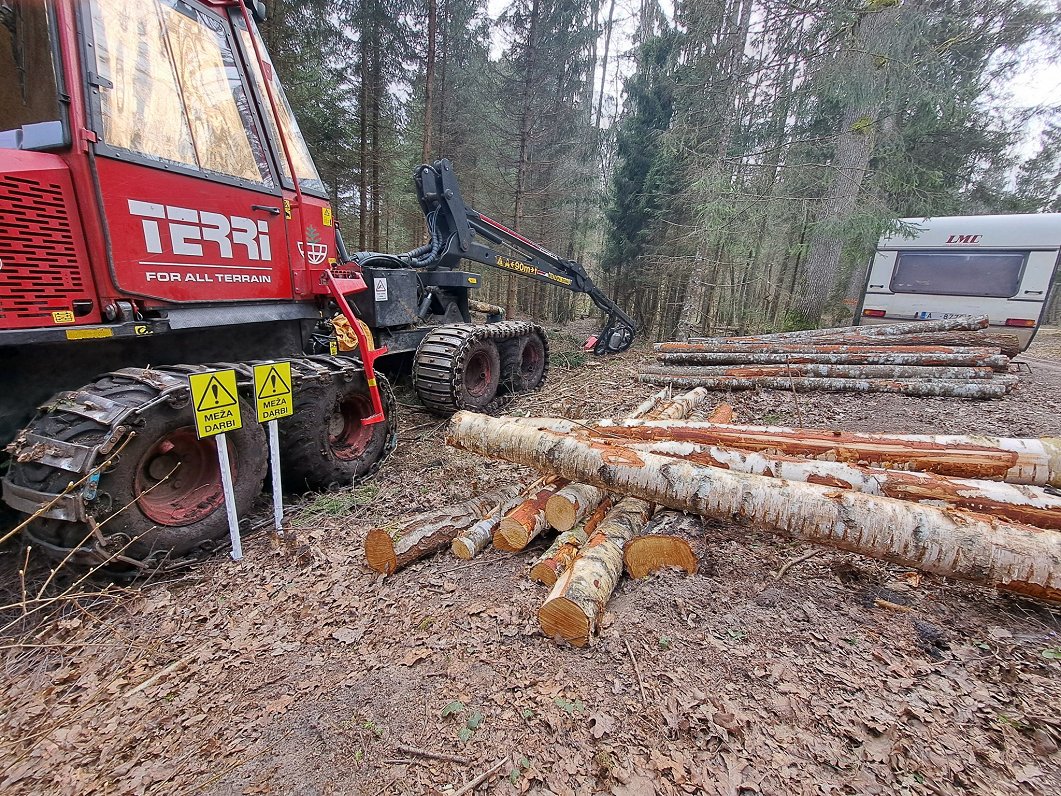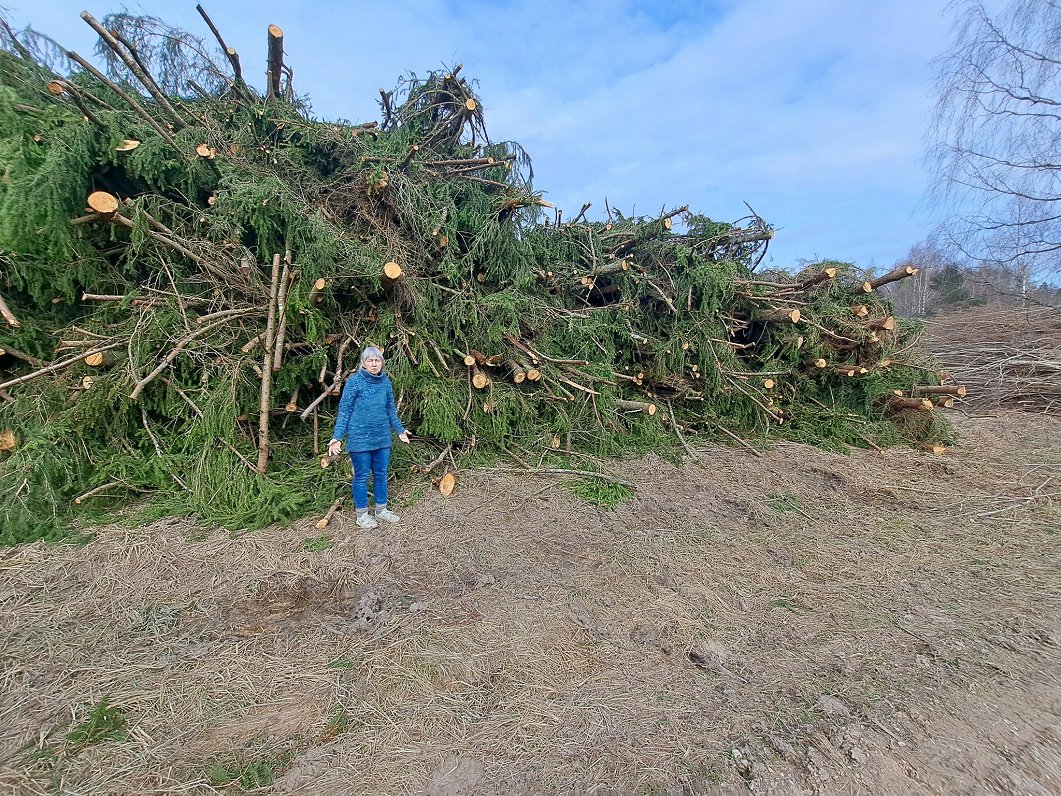Ten-year nature census comes to a close
In the middle of February this year, the acting deputy secretary on environmental protection matters of the Ministry of Environmental Protection and Regional Development (VARAM) Rudīte Vesere presented a report on biotope mapping in Latvia. "The task of the nature census was to find out what and how many natural values we have in Latvia and to obtain detailed and full information about Latvian natural values, their quality and distribution because we have not had a summary like this before," AF quotes the presentation.
While experts were mapping out the biotopes for ten years, conflicts escalated between nature guards and forestry and agricultural businesses about how much Latvia should preserve and how much it should give away for economic purposes.
The moment is now fast approaching for politicians to finally decide conceptually what and where the state will protect.
The informative report on the ten-year nature census is now out for public consultation. It will be in the hands of ministries and the government in spring, promises Daiga Vilkaste, Director of the Nature Conservation Department at the Ministry of Environmental Protection.
"We are processing the submitted proposals, objections, fine-tuning the information report itself, and the next step, which also takes place on the TAP [legal act portal], is to send it to the ministries."
86 proposals were received from 16 interested organizations to add to or change the document.
"There are several such blocks of proposals. One is related to compensation, which many people are arguing for - that we need to resolve the issue of compensation [if a protected area is established on one's private land intended for economic purposes], fair compensation and I have to say that yes, the further progress of the report will depend on how we do in the compensation working group," Vilkaste said.
Other stakeholders want to know the specific boundaries of the protected areas. There are objections that protected areas will be created mainly on state land.
Vilkaste continued: "The other is the block of nature organizations, which believes exactly the opposite, that areas should be created according to the maximum number of habitats found, the more and the stricter the better. We are moving quickly, without hesitation, and without wasting time, we are moving forward. Well, basically, the objections are very different, very different for each side, depending on who they represent."
The final of the nature census is just one of the processes that are causing disagreements between farmers, foresters and friends of nature, as well as researchers.
There is also the European Union's biodiversity strategy. This is one of the so-called Green Deal initiatives, which calls for 30% of the country's territory to be designated as protected areas and another third as specially protected areas. Until last year, politicians wanted to see this initiative together with the nature census, but now the two processes are separate.
The European Commission has also brought infringement cases against Latvia for failing to protect habitats.
Latvian State Forests and the Constitutional Court decision
On Monday, April 8, the Constitutional Court handed down its long-awaited judgment in the case on the repeal of regulations that allowed thinner and therefore younger trees to be felled in Latvian forests.
The case was initiated on the application of the Latvian Ornithological Society, the World Wide Fund for Nature and the Latvian Fund for Nature. The organizations believe that if the rules remained in force, Latvia would see a reduction in the area of mature forests that are important for natural diversity.
The Court concluded that the rules were adopted without considering the consequences for nature.
AF asked "Latvian State Forests" (Latvijas valsts meži, LVM) board member Valdis Kalns about the decision.
"Latvian State Forests will be affected little by this judgment because we have a sufficiently high proportion of mature and overgrown stands, more than 60 million (cubic meters), and our historical data and current activity is within 1 percent of what we harvest on average. This is more in case of some sanitary or specific needs."
The claim that forests are growing faster than the company can cut them down has been said numerous time in interviews by officials of LVM and the Ministry of Agriculture, who is the shareholder of LVM.
However, if there are so many forests to be felled, why is the company so eager to cut down trees in a way that teeters on the edge of ethics and even violates it? AF gives the example of protected Pokaiņi forest, which has also been the subject of forestry works.
Valdis Kalns replied: "I cannot comment on this specific situation, but I know the general principle. We in the country... also have climate neutrality objectives, where one of the measures that is being discussed and introduced, which each owner can decide for himself, is to create productive stands by reforestation. But if there are individual birches, white alders or some bushes, it is a normal economic practice to remove the overgrowth in question, prepare the soil and plant forest crops already."
The 100% state-owned "Latvian State Forests" developed a new medium-term strategy in the autumn of 2023. The summary on its website emphasizes the forestry and timber industry. Nature preservation or improvement of natural variety is not among the main aims of the company.
The tables of indicators for the strategic objectives show that the area devoted to the development of more nature-friendly forestry models will increase by 40,000 hectares this year and will remain so for the next six years. But the share of forest land prioritized for nature protection will not increase at all by 2030.
Looking at the strategy it may seem that LVM has abandoned its public relations habit of publicly stating that nature is its priority.
Viesturs Ķerus, Head of the Latvian Ornithological Society, said: "In forest industry talks, the representative of Latvian State Forests says that if we increase the habitats, the amount of wood we can extract will fall. You are admitting that some of the wood comes from forests that should actually be planted. But to the public they are still nature's friends and they show that clear-cutting is cool because it gives light to the little pine and old trees are yuck, so we replace them with new ones and that is how we nurture birds and animals."
Valdis Kalns believes that the nature census documents prepared by the VARAM are harmful.
"There is already a network of protected areas in the country. There is a procedure for creating new protected areas or restrictions. The process of nature census itself, and how to identify natural values, is welcome, the only question is how this protocol decision is made. I will say that really unconstitutional proposals are being put forward."
The company's management is outraged that the Natura 2000 sites will be mainly on state and municipal, i.e. publicly owned, land, and that all the European habitats found there so far and recorded in the nature database "Ozols", where any authorized person can make an entry, will have to be protected in future.
Kalns added: "It should be categorically excluded that one expert, without any legal basis, can make an entry in the nature database "Ozols", which imposes restrictions on forest management. We do not accept this, and then we have to see what it costs the state."
He has estimated that if the maximum scenario is implemented, the country will lose €100 million in dividends and €250 million in turnover. But if we are talking about 3 million cubic meters, that is a quarter of the entire turnover of the Latvian timber industry.
Nature friends question LVM's competence
Nature guards have many examples of avoidable damage to nature done by Latvian State Forests. They also have objections and additions to the nature census report and the government's decision, but the most important thing now is to move faster. So says Jānis Rozītis, Director of the World Wide Fund for Nature in Latvia.
"Investors also want to understand the extent to which habitat protection will be quantitative, qualitative and spatial. And this has to be taken into account, also with some timber flows. But at the same time, we again see that forest industry representatives like LVM say: "No, stop! We cannot push this forward." This means that, yes, if we open up a very, very democratic process, these negotiations can go on again for, I don't know, months or years."
Environmental guide Anita Biseniece has her own description of the Ministry of Agriculture's alleged intention to push forward and past the Constitutional Court's decision to allow younger trees to be felled and how Latvian State Forests prides itself on planting quality forests.
"Understand, one thing is a forest, and another is a field of trees! If they cut down the trees, then destroy all the undergrowth by driving these things here and there, then drive out one-meter-deep furrows, which are not only up to that place where my legs start, but even more, and then plant fir trees on top of the furrows, then you cannot say that the forest is being restored."
She says that the forest has its own ecosystem with a high tree stand, a second tree stand, undergrowth, stands where there are young trees, herbaceous plants, moss, and much more.
Biseniece added: "Then you have to say this - we destroyed the forest, because the forest has certain components, [...] leaving only bare earth, furrows, and one species of tree. It's about the same as a meadow where there are pansies, mayflowers, blah blah blah blah, and they plant beetroot instead of all that. In straight rows. Or carrots. And they say it's a meadow."
Biseniece is convinced that the company that manages the forests that belong to all of us, to the public, which cover a quarter of the territory of Latvia, is not doing it professionally.
She asked: "Does "Latvian State Forests", as a state forest manager, deserve our trust as citizens? This is the main question! This is the main question!"
